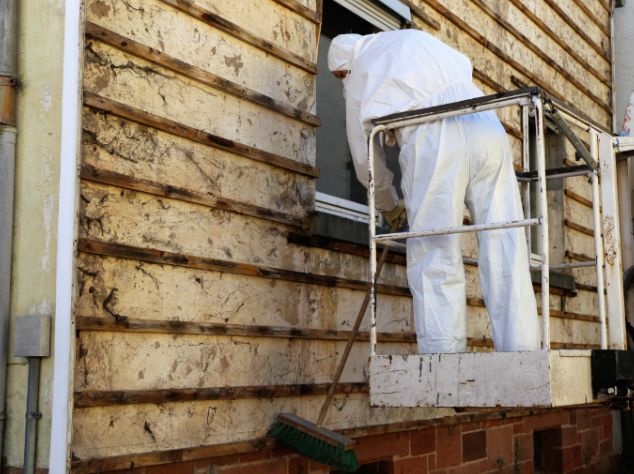Hazardous materials like asbestos, lead, and mold pose serious risks to health and safety. Removing them effectively requires meticulous planning, the right expertise, and strict adherence to regulations. Whether you’re a homeowner, property manager, or business owner, understanding the process ensures your property is safe for occupants while staying compliant with environmental standards. Here’s a step-by-step guide to effective hazardous material removal.
1. Conduct a Professional Assessment
The first step in hazardous material removal is identifying the materials present and assessing the scope of the issue. Certified professionals perform a thorough site inspection and take samples for lab analysis to confirm the presence of hazardous substances.
Why it matters:
- Accuracy: Professional assessments prevent unnecessary removal or overlooking dangerous materials.
- Compliance: Many regulations, such as OSHA and EPA guidelines, require documentation of the findings.
For example, if asbestos-containing materials (ACMs) are suspected in your home or workplace, an expert can pinpoint their locations and determine their condition.
2. Develop a Customized Removal Plan
Once hazardous materials are identified, a detailed plan is created. This plan outlines the removal methods, safety measures, timelines, and disposal strategies.
Key components include:
- Containment strategy: Preventing the spread of hazardous materials.
- Resource allocation: Ensuring the right tools, equipment, and team members are in place.
- Compliance adherence: Meeting state and federal regulations, such as waste disposal laws.
For instance, in mold remediation, containment zones with negative air pressure may be established to prevent spores from spreading to unaffected areas.
3. Obtain Necessary Permits
Before removal can begin, it’s crucial to secure the required permits. These permits vary depending on your location and the type of materials being removed.
Permits may cover:
- Asbestos abatement.
- Lead paint removal.
- Disposal of hazardous waste.
Without the proper permits, you risk fines and delays in your project. Work with professionals familiar with local and national regulations to streamline this process.
4. Prepare the Site and Ensure Safety
Preparation is critical to safeguard workers, residents, and the surrounding environment during hazardous material removal.
Preparation steps include:
- Evacuation: Temporarily relocating occupants, if necessary.
- Sealing off areas: Using plastic sheeting and air filtration systems to contain hazardous particles.
- Protective gear: Providing workers with personal protective equipment (PPE) like respirators, gloves, and suits.
For example, during lead abatement, components like windows and doors are sealed to minimize contamination. Dust suppression techniques, such as wetting surfaces, are also employed.
5. Execute Safe Removal Procedures
This step involves the actual removal of hazardous materials. Trained professionals use specialized equipment and follow industry best practices to ensure safe and efficient operations.
Techniques include:
- Asbestos removal: Carefully cutting and sealing ACMs to prevent fiber release.
- Lead paint stripping: Using chemical methods or abrasive blasting with dust collection systems.
- Mold remediation: Removing contaminated materials, disinfecting surfaces, and applying encapsulants.
Experienced teams like Rath Enterprises, Inc. understand the nuances of handling each type of material, ensuring the process is thorough and safe.
6. Proper Waste Disposal
Hazardous material removal doesn’t end with elimination from the site. Safe disposal is equally critical to protect public health and the environment.
Best practices include:
- Using approved disposal sites for asbestos and lead.
- Transporting hazardous waste in sealed containers.
- Documenting disposal methods to maintain compliance with laws.
For example, asbestos must be sealed in leak-tight containers, labeled, and transported to a designated landfill that accepts ACMs.
7. Post-Removal Verification and Monitoring
After removal, it’s vital to ensure the site is safe and free of hazardous materials. This involves post-removal testing, inspections, and monitoring.
Steps include:
- Air quality testing: Ensuring that no harmful particles remain in the air.
- Visual inspection: Verifying that all hazardous materials have been removed.
- Certification: Obtaining clearance from regulatory agencies or certified inspectors.
In mold remediation, for instance, air samples are taken to confirm that spore levels are back to normal. Post-removal verification provides peace of mind and ensures compliance.
Tips for Choosing the Right Contractor
Hiring a professional hazardous material removal contractor is crucial for safety and compliance. Here’s what to look for:
- Licensing and Certifications: Ensure the company is certified in asbestos, lead, and mold removal.
- Experience: Look for a proven track record in hazardous material remediation.
- Insurance: Verify liability and workers’ compensation coverage.
- References and Reviews: Check customer feedback to assess reliability and performance.
Rath Enterprises, Inc., for example, specializes in asbestos abatement, lead abatement, and mold remediation, combining technical expertise with a commitment to safety and customer satisfaction.
Why Professional Hazardous Material Removal Matters
Attempting to remove hazardous materials without proper training and equipment can lead to severe health risks, environmental contamination, and legal penalties. By following these seven steps and partnering with a trusted contractor, you can:
- Ensure the safety of occupants.
- Avoid costly mistakes.
- Protect the environment.
Hazardous material removal isn’t just about clearing your property—it’s about safeguarding lives. If you’re facing challenges with asbestos, mold, lead, or other hazardous substances, consult a licensed professional today to ensure your property is clean, safe, and compliant.

